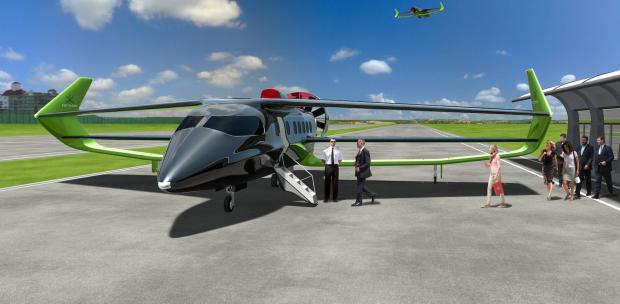
Breaking News
 Is Yen Carry Trade's unwind about to trigger a repo market meltdown? Let's dive into the mec
Is Yen Carry Trade's unwind about to trigger a repo market meltdown? Let's dive into the mec
 Chairman Rand Paul Releases New Report Revealing Hundreds of Billions...
Chairman Rand Paul Releases New Report Revealing Hundreds of Billions...
 Get Schiffty Music Video | Rick and Morty | Adult Swim
Get Schiffty Music Video | Rick and Morty | Adult Swim
Top Tech News
 This tiny dev board is packed with features for ambitious makers
This tiny dev board is packed with features for ambitious makers
 Scientists Discover Gel to Regrow Tooth Enamel
Scientists Discover Gel to Regrow Tooth Enamel
 Vitamin C and Dandelion Root Killing Cancer Cells -- as Former CDC Director Calls for COVID-19...
Vitamin C and Dandelion Root Killing Cancer Cells -- as Former CDC Director Calls for COVID-19...
 Galactic Brain: US firm plans space-based data centers, power grid to challenge China
Galactic Brain: US firm plans space-based data centers, power grid to challenge China
 A microbial cleanup for glyphosate just earned a patent. Here's why that matters
A microbial cleanup for glyphosate just earned a patent. Here's why that matters
 Japan Breaks Internet Speed Record with 5 Million Times Faster Data Transfer
Japan Breaks Internet Speed Record with 5 Million Times Faster Data Transfer
 Advanced Propulsion Resources Part 1 of 2
Advanced Propulsion Resources Part 1 of 2
 PulsarFusion a forward-thinking UK aerospace company, is pushing the boundaries of space travel...
PulsarFusion a forward-thinking UK aerospace company, is pushing the boundaries of space travel...
 Dinky little laser box throws big-screen entertainment from inches away
Dinky little laser box throws big-screen entertainment from inches away
 'World's first' sodium-ion flashlight shines bright even at -40 ºF
'World's first' sodium-ion flashlight shines bright even at -40 ºF
Return of the tri-plane: The revolutionary British-built hybrid aircraft powered by...

A hybrid aircraft that is quieter than a Hoover and harks back to the tri-planes of the First World War is aiming to be at the forefront of eco-friendly air travel.
Faradair, based at Duxford, home of the Imperial War Museum, aims to have its bio-electric aircraft (Beha) ready for commercial flights by 2026 with a full fleet available by the end of the decade.
The futuristic 18-seater airplane sports a triple-box wing setup — famously associated with German WWI flying ace the Red Baron — and incorporates a combination of electric motors and biofuel.
Electric motors will orchestrate take-off and landing which will help reduce noise pollution, as the company moves a step closer to carbon neutral travel.
The Beha is expected to register around 70 decibels (dB) when taking off and landing, around the same noise level as a household vacuum cleaner, whereas traditional jet engines can reach 140dB.
Biofuel engines will take over while cruising and power a turbogenerator. The engines will also help recharge the electric motors, with the assistance of solar panels.



